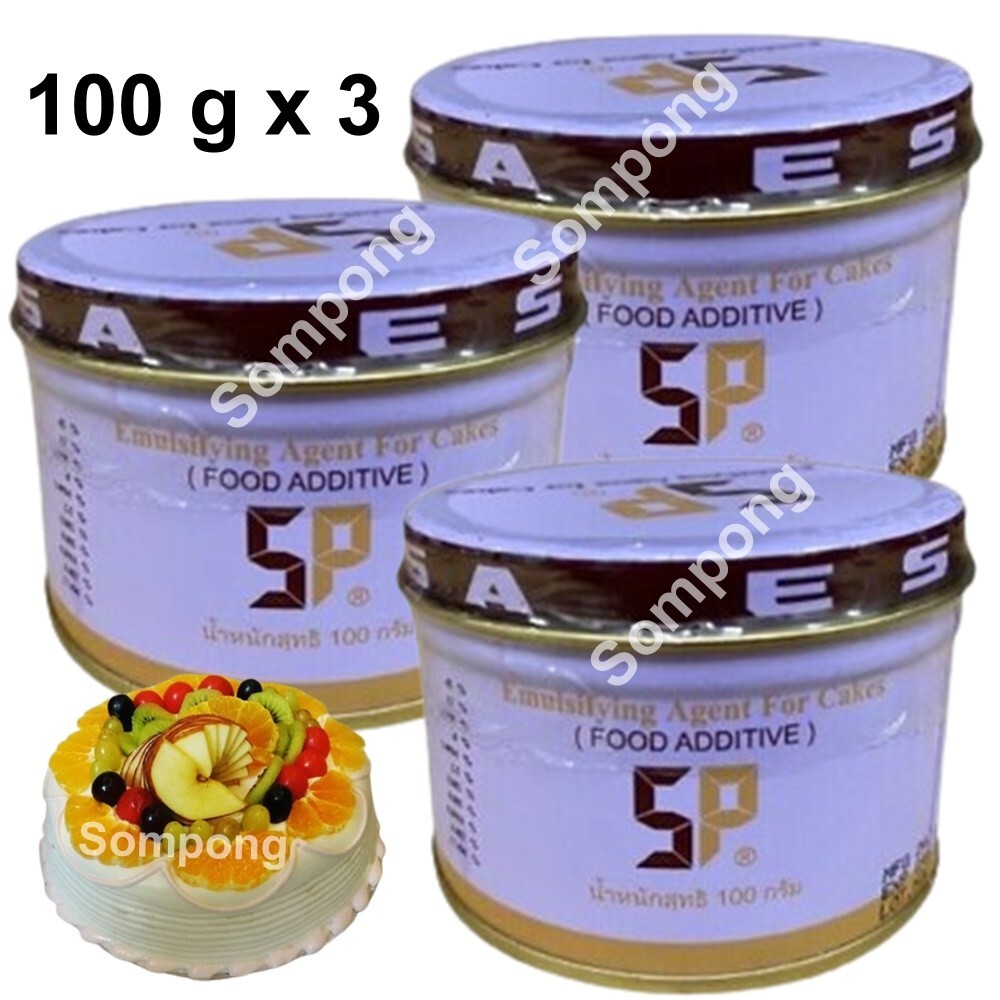Emulsifier In Food vs. Thickeners: What’s the Difference?
Why It Is Essential to Include an Emulsifier in Food for Ideal Preference and High Quality
Emulsifiers play a critical role in food manufacturing by guaranteeing the secure blending of immiscible liquids, such as oil and water. They decrease interfacial stress, which avoids the splitting up of ingredients and adds to an uniform appearance. This not only improves mouthfeel yet also impacts taste assumption. Understanding the requirement of emulsifiers discloses much deeper insights into their function and relevance in culinary applications. What ramifications does this have for food innovation and consumer choices?
Recognizing Emulsifiers: The Essentials
Emulsifiers play an essential role in food scientific research, functioning as agents that promote the mixing of two immiscible fluids, such as oil and water. These substances possess both hydrophilic (water-attracting) and hydrophobic (water-repelling) properties, which enable them to support emulsions. Common emulsifiers include lecithin, discovered in egg yolks and soybeans, and mono- and diglycerides, stemmed from fats.
The Scientific research Behind Emulsification
When 2 immiscible liquids are integrated, the procedure of emulsification comes to be fundamental for accomplishing a secure combination. Emulsification involves dispersing one liquid within one more, typically oil in water or the other way around. This procedure happens with mechanical frustration, which damages the bigger beads right into smaller sized ones, therefore raising the surface. Nonetheless, without the presence of emulsifiers, these droplets would integrate, leading to splitting up.
Emulsifiers are molecules with hydrophilic (water-attracting) and hydrophobic (water-repelling) properties. Their unique framework permits them to minimize the interfacial tension between the two immiscible liquids, maintaining the solution. This stablizing protects against separation and enhances the harmony of structure and taste. The communications at the molecular level are important for keeping the honesty of the solution, making sure that food maintain their preferred consistency and taste. Understanding this science is significant for food researchers and makers in developing high-grade food items.
Types of Emulsifiers Made Use Of in Food
The kinds of emulsifiers utilized in food can be broadly classified into all-natural and synthetic varieties. Usual food emulsifiers, such as lecithin and mono- and diglycerides, play an important role in enhancing food stability and structure. Understanding these differences is vital for appreciating exactly how emulsifiers add to the general quality of food.
Synthetic vs. all-natural Emulsifiers
While both natural and artificial emulsifiers serve the necessary role of maintaining mixes in food, their features and beginnings vary considerably. Natural emulsifiers, acquired from plant or pet resources, consist of lecithin, casein, and specific gum tissues. They are frequently regarded as much healthier options, attracting customers looking for clean-label products. On the other hand, synthetic emulsifiers, such as mono- and diglycerides, are chemically engineered and may supply boosted stability and capability in a bigger range of applications. These synthetic alternatives can be a lot more economical and provide consistent high quality. Nevertheless, they might evoke hesitation amongst health-conscious customers. Eventually, the choice in between all-natural and artificial emulsifiers relies on the wanted high qualities of the food, consisting of texture, taste, and shelf-life security.
Common Food Emulsifiers
Emulsifiers play an essential role in the food market, guaranteeing the stability and texture of various items. Common food emulsifiers include lecithin, mono- and diglycerides, and polysorbates. Emulsifier In Food. Lecithin, derived from resources like soybeans and egg yolks, is commonly used in baked products and delicious chocolates. Mono- and diglycerides, usually acquired from veggie oils, improve the creaminess of margarine and gelato. Polysorbates, synthetic emulsifiers, are frequently discovered in salad dressings and sauces, advertising a smooth consistency. Various other emulsifiers such as xanthan gum tissue and guar gum tissue, both all-natural thickeners, likewise contribute to the desired structure in various foodstuff. Each emulsifier type serves details objectives, adding to the total quality and appeal of food items

Role in Food Stability
Food stability is greatly affected by the kinds of emulsifiers made use of, which help protect against the splitting up of active ingredients in various solutions. Emulsifiers such as lecithin, mono- and diglycerides, and polysorbates play important duties in keeping the harmony of products like dressings, sauces, and gelato. Lecithin, acquired from soy or egg yolk, is specifically reliable because of its all-natural residential or commercial properties, while mono- and diglycerides enhance appearance and service life. Polysorbates, on the other hand, improve the security of oil-in-water emulsions, making them ideal for baked goods. The choice of emulsifier relies on the specific food application and preferred characteristics, making sure that items stay secure, enticing, and of top quality throughout their intended service life.
Just How Emulsifiers Improve Texture and Mouthfeel
Enhancing the sensory experience of food, emulsifiers play an important function in enhancing structure and mouthfeel. These compounds help with the consistent circulation of active ingredients, permitting a smoother and creamier uniformity in items such as dressings, sauces, and gelato. By maintaining blends of oil and water, emulsifiers prevent separation, leading to a cohesive texture that boosts the overall eating experience.
Emulsifiers can change the thickness of food products, adding to a desirable thickness or creaminess. This modification of texture can affect exactly how food really feels in the mouth, influencing complete satisfaction and satisfaction. Additionally, by creating a stable emulsion, emulsifiers aid preserve the stability of the product, making sure that the designated mouthfeel is consistently provided gradually. On the whole, the application of emulsifiers is essential for attaining the appropriate structure and mouthfeel, eventually raising the high quality of food products.
The Role of Emulsifiers in Taste Improvement
Flavor enhancement in culinary applications typically depends upon the reliable usage of emulsifiers. These substances assist in the mixing of water and oil, permitting for the even circulation of flavor compounds within foodstuff. By developing stable emulsions, emulsifiers aid to envelop and release volatile flavors, enhancing the overall sensory experience.
Additionally, emulsifiers can boost the assumption of preference by affecting the mouthfeel and texture of recipes. A smoother, extra cohesive product can result in an increased understanding of flavors, making them a lot more delightful and noticable. Emulsifiers can safeguard delicate flavors from destruction, making sure that they remain intact throughout processing and storage.
Emulsifiers in Popular Food Products
How do emulsifiers add to the appearance and stability of popular food items? Emulsifiers play a necessary role in read this numerous extensively eaten items. In salad dressings, they ensure a smooth mix of oil and vinegar, avoiding separation and enhancing mouthfeel. In gelato, emulsifiers develop a creamy structure by supporting air bubbles, resulting in an indulgent and abundant product. Baked products, such as bread and cakes, advantage from emulsifiers by enhancing volume and crumb framework, causing a lighter and extra enticing appearance. Additionally, mayonnaise depends on emulsifiers to maintain its thick consistency and prevent oil separation. Margarine and spreads additionally use emulsifiers to achieve a spreadable texture while preserving security. These instances highlight the significant impact of emulsifiers on the high quality and satisfaction of day-to-day food items, underscoring their value in contemporary food solution.
The Future of Emulsifiers in Food Development
The future of emulsifiers in food advancement is marked by considerable improvements in innovation, leading the way for new formulations. Additionally, the need for healthier emulsifier options is rising, prompting scientists to discover plant-based and natural options. Lasting sourcing methods are likewise coming to be crucial, as customers progressively prioritize environmental obligation in their food options.
Developments in Emulsifier Technology
As scientists remain to explore the molecular complexities of emulsifiers, significant innovations are emerging that promise to change food development. Recent growths focus on creating extra flexible and efficient emulsifiers that boost structure, stability, and flavor in different foodstuff. Technologies in biopolymer-based emulsifiers are acquiring grip, offering boosted sustainability and performance over typical options. In addition, innovations in nanotechnology are allowing the design of emulsifiers at the molecular degree, which can lead to finer solutions and boosted sensory experiences. These technological innovations are not only improving product high quality yet likewise broadening the variety of applications for emulsifiers in the food sector. As these developments unravel, they are expected to redefine culinary opportunities and consumer preferences in the future.
Much Healthier Emulsifier Alternatives
While traditional emulsifiers have played a necessary function in food manufacturing, there is an expanding demand for healthier alternatives that straighten with customer preferences for clean tags and all-natural components. Innovations in plant-based emulsifiers, such as those originated from flaxseed, sunflower, and soy, have actually gained popularity because of their perceived health and wellness advantages. These choices typically consist of less additives and use functionality similar to synthetic emulsifiers. In addition, ingredients like aquafaba, the liquid from cooked chickpeas, have go become flexible emulsifying representatives, interesting vegan and health-conscious customers. Emulsifier In Food. The change in the direction of these much healthier emulsifiers not just boosts the allure of food items yet also supports the trend of transparency in ingredient sourcing, ultimately fostering consumer count on and contentment

Lasting Sourcing Practices
Lasting sourcing methods are becoming significantly essential in the advancement of emulsifiers, showing a broader dedication to environmental responsibility within the food market. Producers are now focusing on the use of renewable energies, such as plant-based ingredients, which lessens the carbon footprint related to standard emulsifiers. This shift not just supports biodiversity however also advertises ethical farming techniques that benefit regional communities. In addition, developments in modern technology enable the removal and processing of emulsifiers with minimized environmental effect. By adopting sustainable sourcing, firms enhance their brand name image while satisfying customer need for transparency and eco-friendliness. As the food market remains to progress, the assimilation of sustainable emulsifiers will play an essential duty fit future advancements, ensuring a balance in between high quality and ecological stewardship.
Regularly Asked Questions
Are Emulsifiers Safe for People With Food Allergies?

Can Emulsifiers Affect the Nutritional Value of Food?
Emulsifiers can affect the nutritional worth of food by improving nutrition absorption or potentially altering the bioavailability of particular substances. Nevertheless, their impacts vary widely relying on the sort of emulsifier and the general food formulation.
Exactly How Do Emulsifiers Effect Life Span of Products?
Emulsifiers enhance the life span of items by stabilizing combinations, stopping separation, learn the facts here now and lowering putridity. This security helps keep texture and flavor in time, inevitably making sure food continues to be safe and enticing for longer periods.
What Prevail All-natural Emulsifiers Located in Home Kitchens?
Typical natural emulsifiers discovered in home kitchens include egg yolks, honey, mustard, and soy lecithin. These components help support mixtures by decreasing surface stress in between oil and water, improving texture and consistency in numerous recipes.
Exist Any Type Of Interest In Synthetic Emulsifiers in Food?
Problems concerning artificial emulsifiers in food include prospective digestive problems, inflammatory feedbacks, and links to weight problems. Some researches recommend these ingredients may interfere with gut microbiota, raising concerns concerning their long-lasting results on health and wellness.
Typical food emulsifiers, such as lecithin and mono- and diglycerides, play an essential role in improving food security and appearance. Emulsifiers play a vital duty in the food industry, making sure the security and appearance of various products - Emulsifier In Food. Other emulsifiers such as xanthan periodontal and guar gum tissue, both natural thickeners, also contribute to the preferred structure in different food items. Current developments focus on creating much more effective and flexible emulsifiers that boost appearance, security, and taste in numerous food items. Emulsifiers can pose risks for individuals with food allergic reactions, as some emulsifiers are derived from irritants like soy or eggs